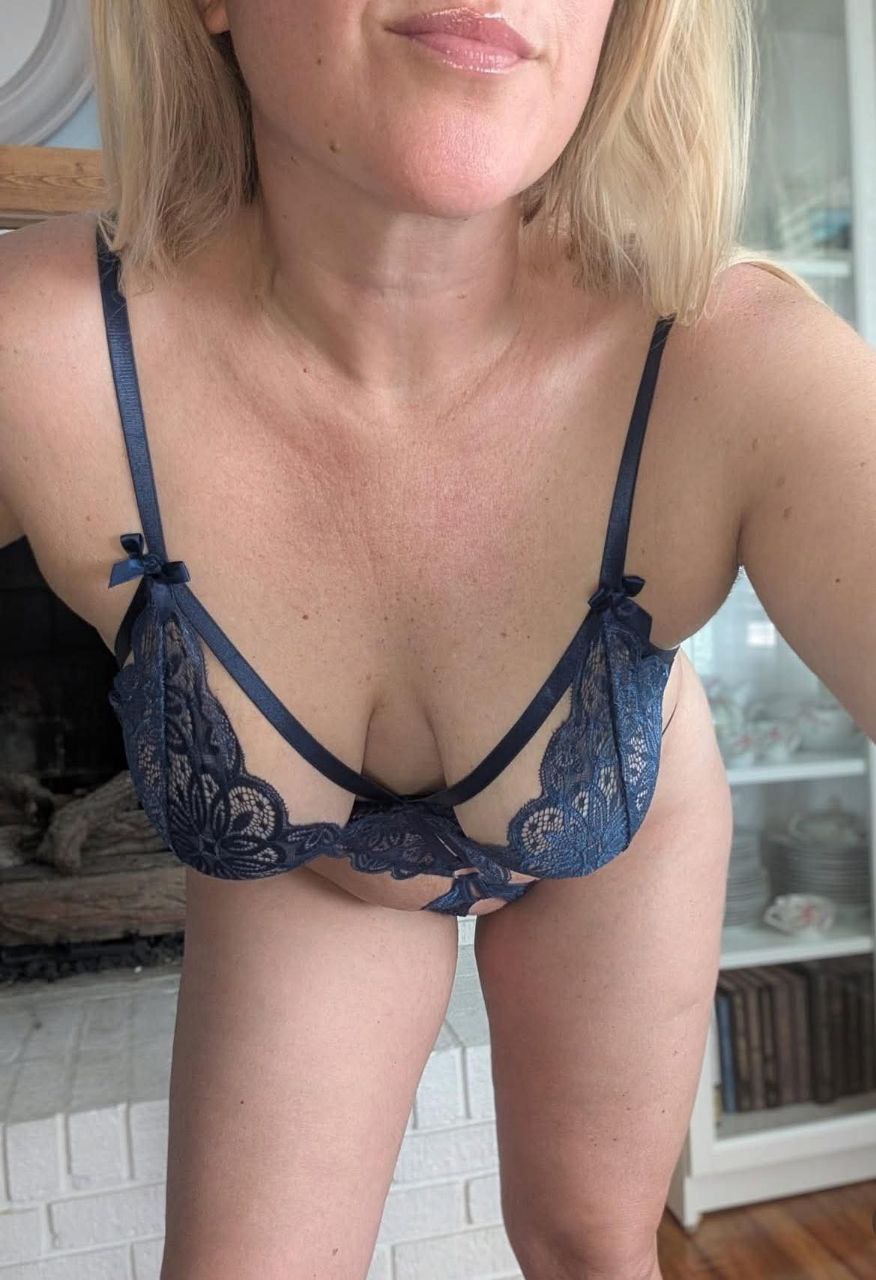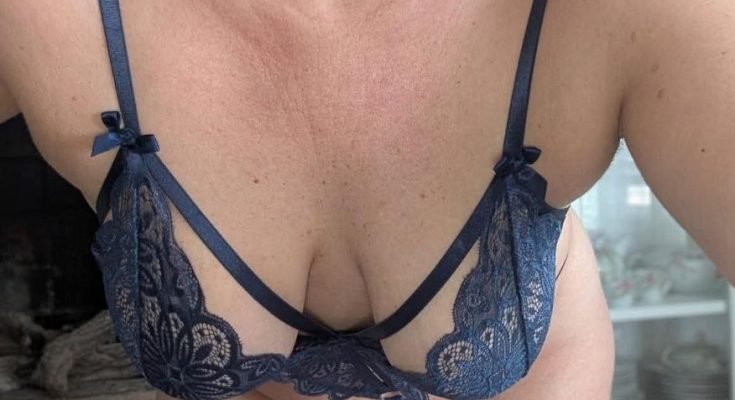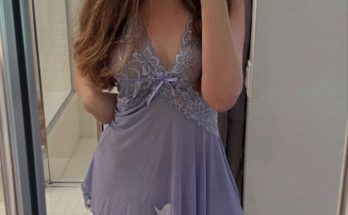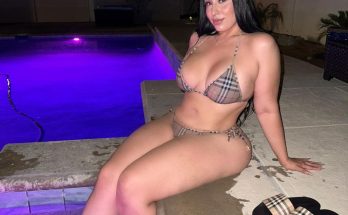A Woman’s Large Breasts Indicate That Her Vagin…See more

The 12 Most Common Breast Types – Which One Are You?
When it comes to the female body, breast anatomy varies significantly from person to person. There’s truly no single normal breast shape, and that’s perfectly natural. If you’ve ever looked in the mirror and asked yourself, “Why are breasts different sizes or shapes?” the answer lies in a mix of genetics, hormones, age, weight, and overall breast development. In this guide, we’ll walk you through 12 of the most common breast types, explaining what makes each one unique.
1. East West Breasts
In east west breasts, the nipples point outward, away from the center of the chest. The breasts themselves are positioned farther apart, creating a wider chest appearance. This type may feature protruding nipples and less volume in the inner breast tissue. Women with this shape may prefer bras that push the breasts slightly inward to create more centralized support. If you’re considering enhancing symmetry or fullness, aesthetic options are available to help you achieve your desired look. To explore these possibilities, check out our blog: What You Should Know About “Breast Aesthetics”.
2. Asymmetrical Breasts
Asymmetrical breasts refer to when one breast is visibly larger, smaller, or shaped differently than the other. This variation can be subtle or pronounced and is surprisingly common. In fact, more than half of all women have some level of breast asymmetry. If you’ve wondered why are breasts different sizes, the answer is usually normal biological variation during puberty, pregnancy, or hormone shifts. This difference often becomes more noticeable over time but usually doesn’t signal any health concern.
3. Relaxed Breasts
Relaxed breasts are softer in appearance with looser breast tissue. Nipples often face downward due to a lack of natural firmness. This shape may develop with age, weight changes, or after breastfeeding. Despite societal perceptions, relaxed breasts are a completely normal and healthy variation. Wearing the right supportive bra can help lift and shape them comfortably.

4. Teardrop Breasts
Shaped like a water droplet, teardrop breasts have a gently sloping top and a fuller, rounder bottom. This elegant shape is often considered ideal by cosmetic surgeons because of its natural appearance. Teardrop breasts can provide a graceful contour in both bras and clothing, and they often appear in individuals with well-developed breast anatomy.
5. Round Breasts
Round breasts are evenly full at the top and bottom, creating a balanced, circular look. This is considered one of the most symmetrical breast shapes and is often used as a reference by lingerie brands for product design. Round breasts tend to be associated with firmness and youthful appearance, though they can occur at any age.
6. Conical Breasts
Conical breasts have a cone-like shape, often pointing forward with less overall roundness. This type is more frequently seen in individuals with smaller cup sizes. Conical breasts may also be accompanied by variations in nipple shape, such as flat nipples, or differences in areola size and color. It’s a completely natural breast shape and often associated with puberty or early-stage breast development.
7. Slender Breasts
Slender breasts are longer than they are wide, often with nipples that point slightly downward. This shape may have less fullness, especially at the top. While sometimes associated with sagging, slender breasts are simply another form of breast diversity. They may be more common in individuals with lower body fat or post-breastfeeding.
For those looking to restore volume or achieve a more lifted appearance, surgical options like breast augmentation or a breast lift may offer effective solutions.
8. Bell Shaped Breasts
Bell shaped breasts are narrow at the top and fuller at the bottom, creating a natural bell-like curve. This type is often associated with larger breasts and may be more likely to exhibit sagging or downward-pointing nipples over time due to gravity and volume. Supportive undergarments are often key for comfort and lift.
9. Low-Set Breasts
Low-set breasts are positioned lower on the chest wall, meaning the breast mound sits closer to the abdomen than the collarbone. The nipples also tend to be lower and may sit below the midpoint of the upper arm when the arms are relaxed. This breast type is completely normal and often genetic. While it may create the illusion of sagging, especially in bras with standard cup placement, it doesn’t indicate any medical concern. Choosing the right bra support or exploring aesthetic options like a breast lift can help improve symmetry and confidence if desired.

10. Close Set Breasts
Close set breasts have very little space between them and tend to sit near the center of the chest. They can make cleavage more prominent, especially in certain clothing or bra styles. This type is common and not to be confused with side set breasts, which are positioned farther apart. Those with close set breasts may find that traditional bras offer ample central support.
11. Side Set Breasts
Side set breasts are spaced farther apart, with more room between the breasts and closer proximity to the underarms. This type is essentially the opposite of close set breasts. Side set shapes often benefit from bras designed to bring the breasts inward for a more lifted appearance. It’s a natural anatomical variation and one of the more common breast types.
12. Athletic Breasts
Athletic breasts are typically wider and flatter than other breast types. They tend to have less fatty tissue and more muscle tone, giving them a firmer, sculpted appearance. Common among women with active lifestyles or strong pectoral muscles, athletic breasts can also affect how bras fit. Despite the leaner look, this type is simply a variation of healthy breast development.
Flat Nipples and Nipple Variations
Nipples vary just as much as breast shapes. You may have flat nipples, inverted nipples, or protruding nipples — and all of these are entirely normal. Other variations include areola size, areola color, and small bumps around the nipple known as Montgomery glands. Some individuals even have a supernumerary nipple, a harmless extra nipple that often goes unnoticed. Even features like hair around nipples are perfectly natural and vary by person.
What Determines Breast Shape?
Once you’ve recognized your breast type, it’s normal to ask: Why do breasts come in so many different shapes and sizes? The answer lies in a combination of biology, lifestyle, and time.
Genetics Play the Biggest Role
Your genetic makeup is the number one factor shaping your breast anatomy. From breast density to tissue distribution and overall size, much of it is inherited. If other women in your family have asymmetrical breasts, or specific nipple types, you may have noticed similar traits in yourself.
Other Factors That Influence Breast Shape
Weight Fluctuations: Fat makes up a significant portion of breast tissue. Gaining or losing weight can affect not only the size but also the breast shape, creating a fuller or more relaxed appearance over time.
Exercise & Muscle Tone: While breasts themselves don’t contain muscle, the pectoral muscles behind them can impact how perky or lifted they appear. Women with strong pecs often show signs of more athletic breasts.
Age and Natural Changes: As you age, your skin loses elasticity. This naturally results in sagging or relaxed breasts, especially after menopause or multiple pregnancies.
Pregnancy and Breastfeeding: Hormonal shifts during pregnancy and nursing alter breast size and tissue distribution. It’s common to experience swelling, stretching, and changes in nipple or areola shape during these stages.
What About the Areolae?
The areola is the pigmented area around the nipple, and like your breast shape, no two areolae are exactly alike.
Size and Color Variations: The average areola size is around 4 cm in diameter, but they can be smaller or significantly larger. Areola color can range from pink to deep brown, often influenced by skin tone and hormonal changes.
Shape and Symmetry: Some people have round areolae, while others may have oval or asymmetrical shapes. Uneven areolae are entirely normal and more common than people think.
Hormonal Influence: During pregnancy or breastfeeding, areolae often darken and enlarge temporarily. These changes usually resolve over time and are a natural part of breast development.
Understanding Nipple Variations
Your nipple shape is just as unique as the rest of your anatomy. There are several common types of nipples, and all are perfectly normal.
Common Nipple Types and Features:
-
Flat Nipples
Sit flush with the areola and may only become visible when stimulated. -
Inverted Nipples
Retract inward rather than protrude outward. This can affect one or both nipples and is typically harmless. -
Protruding Nipples
Extend outward, sometimes significantly, even without stimulation. -
Puffy Nipples
Feature raised tissue, where both the nipple and areola form a dome-like mound. -
Bumpy Nipples
Surrounded by small glands called Montgomery glands, which can be more visible in some people. -
Hair Around Nipples
Yes, it’s normal. Some individuals may notice fine or darker hair growth in this area. -
Supernumerary Nipple
An extra nipple along the chest or abdomen. This is more common than you’d think and usually not a medical concern. -
Unilateral Inverted Nipple
When only one nipple is inverted and the other is not. It’s a benign variation in most cases.
Noticing Changes? Here’s When to Seek Help
While different breast shapes and nipple types are typically nothing to worry about, certain symptoms should prompt a visit to a medical professional. Monitoring your breast anatomy over time can help you detect any irregularities early.
Warning Signs Include:
-
Persistent or unexplained breast tenderness
-
Redness, bruising, or swelling without cause
-
Unusual or bloody nipple discharge
-
Noticeable breast lumps
-
Sudden inversion of a nipple that was previously protruding
-
Dramatic change in shape, size, or skin texture
If you notice any of these, it’s always best to consult a doctor. Early evaluation can ease your mind or ensure prompt treatment if needed.
What Your Breast Type Says About You
There’s no one right way for breasts to look. Whether you have conical, slender, athletic, or bell shaped breasts, they are part of your unique identity. Learning to recognize your breast shape helps in selecting the right bra, understanding changes in your body, and feeling confident in your skin.
That said, if you ever notice unusual symptoms such as breast lumps, abnormal discharge, or a sudden change in shape or size, don’t hesitate to consult a healthcare provider. Your body speaks to you — Rememore encourages you to listen with care.





